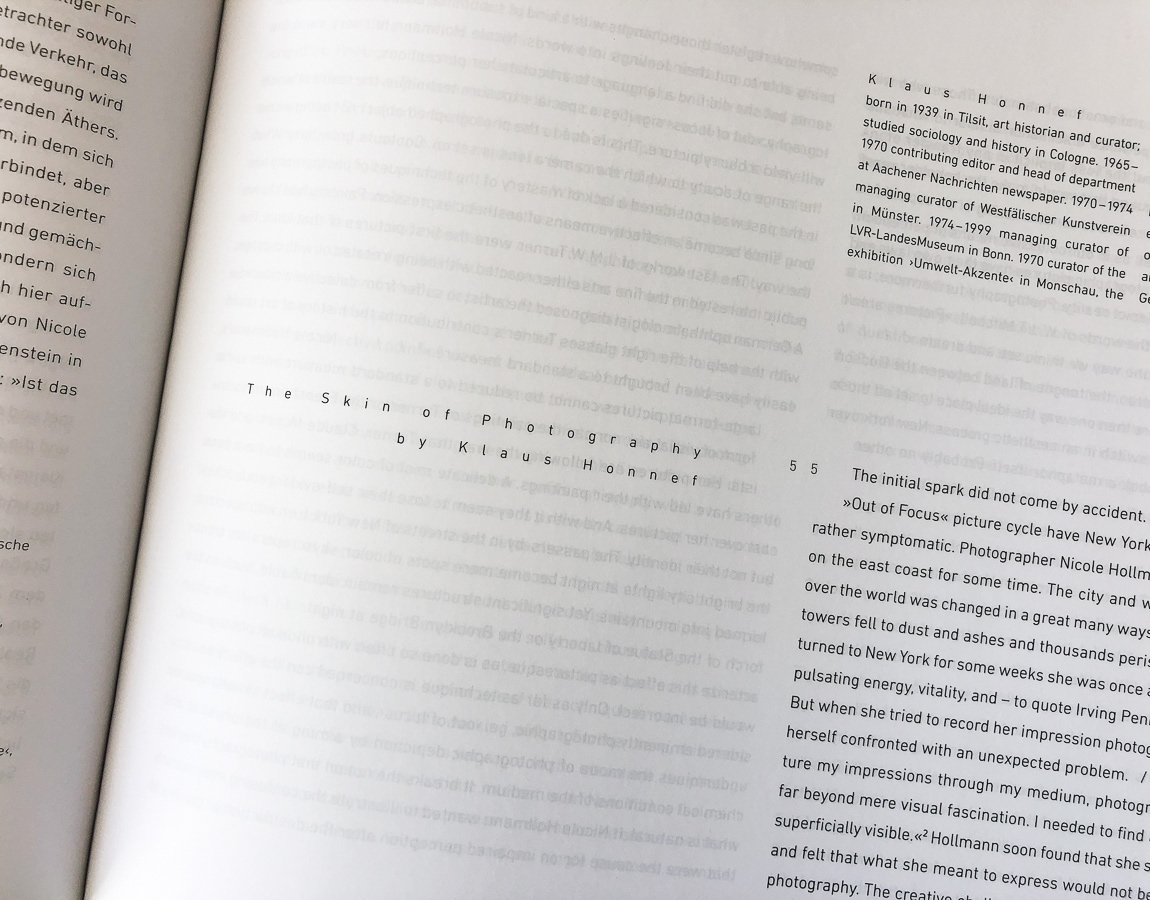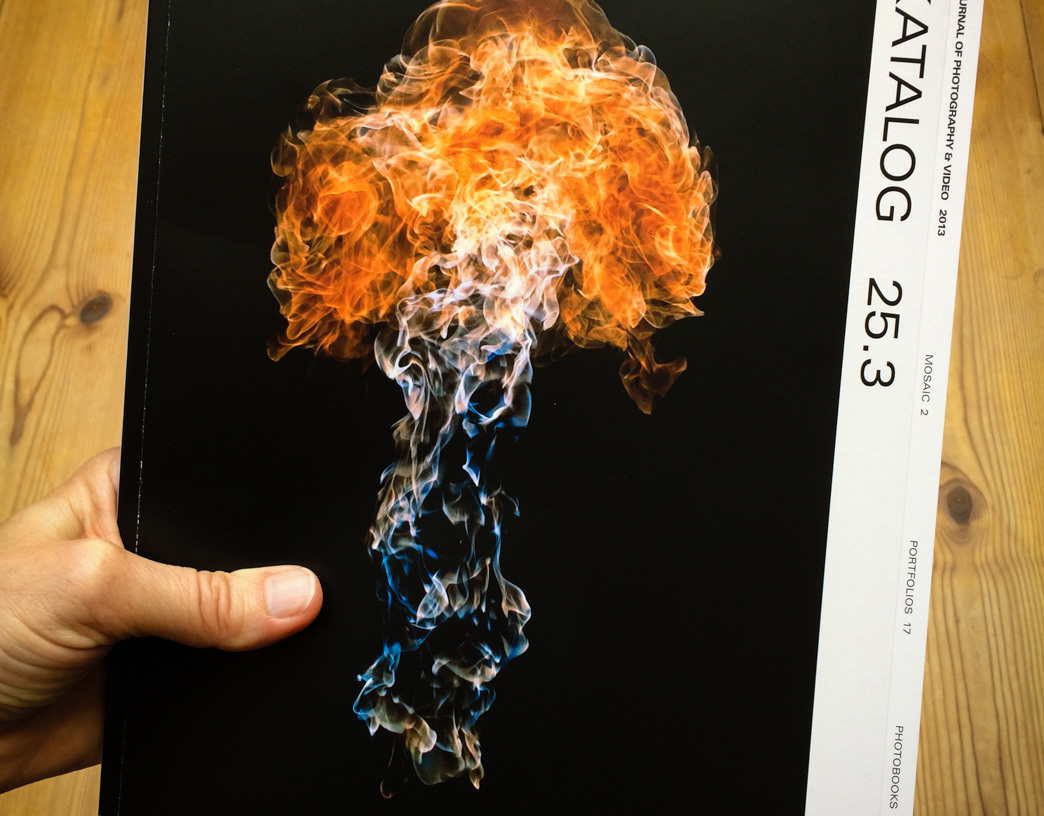The initial spark did not come by accident. The fact that the first works of the »Out of Focus« picture cycle have New York as their motif carries something rather symptomatic. Photographer Nicole Hollmann had not visited the great city on the east coast for some time.
The city and what it meant to visitors from all over the world was changed in a great many ways on September 11 when the twin towers fell to dust and ashes and thousands perished. When Nicole Hollmann returned to New York for some weeks she was once again overwhelmed by the city's pulsating energy, vitality, and – to quote Irving Penn – »electrifying atmosphere«.
But when she tried to record her impression photographically she suddenly found herself confronted with an unexpected problem. » I was looking to capture my impressions through my medium, photography, in a way that would go far beyond mere visual fascination. I needed to find a way to show more than the superficially visible.«
Hollmann soon found that she saw things with different eyes and felt that what she meant to express would not be possible with conventional photography. The creative challenge was finding the adequate form in which she would be able to gather all her sensory and emotional stimulus. Those who will see her pictures in the future should experience a sensation similar to what she had experienced deep inside her, without the loss implicit in any transfer of information. She had to find a visual language that would make the beholder react like she did and see what Wittgenstein refers to as »the flaring of an aspect« to set off a change in the individual, as well as in our collective means of perception.
This implies the understanding that photographic pictures have their own laws and create their own reality rather than depict reality. Photography furthermore, is a transformer station, or to say it with the words of W.J.T. Mitchell, »Pictures aren’t merely passive beings. They change the way we think, see and dream.
... [...] ...
Color is the motor and bearer of this transfer. The cutback of formal repertoire enables the colors to achieve independent effects. It isn’t by chance that red takes the leading role. The Chinese red of a marquee above the bright yellow of a New York cab (NYC 5 YCRS, see page 19) unfolds an incredibly physical vitality. Red is the gravitational pull and the center wherever it appears. Red, the color of blood, »matter par excellence«, embodies, according to the Renaissance theoretician and painter Lomazzo, the »origin of the mind and the acuity of the eye.«
So in the flesh tones – often mixed by painters from red and white – that which is alive is pulsating. Nicole Hollmann strives to leave an echo of longing on the skin (surface) of that which is photography, something which commercial photography neutralizes to boring surrogates by means of endless repetition.
So in the flesh tones – often mixed by painters from red and white – that which is alive is pulsating. Nicole Hollmann strives to leave an echo of longing on the skin (surface) of that which is photography, something which commercial photography neutralizes to boring surrogates by means of endless repetition.
Art historian and curator; studied sociology and history in Cologne.
1965-1970 contributing editor and head of department at Aachener Nachrichten newspaper. 1970-1974 managing curator of Westfälischer Kunstverein in Münster. 1974-1999 managing curator of LVR-LandesMuseum in Bonn. 1970 curator of the exhibition »Umwelt-Akzente« in Monschau, the first outside art exhibition in the world. 1972 co-organizer of documenta 5 in Kassel and of documenta 6 in 1977. From 1980 to 2004 professor of theory of photography at Kunsthochschule Kassel. Since 2000 freelance curator, lecturer, art expert and author. Klaus Honnef is a Chevalier of the »Ordre des Arts et des Lettres« of France and was awarded the Kulturpreis der Deutschen Gesellschaft für Photographie in 2011.



